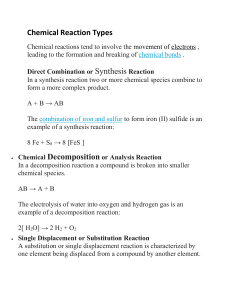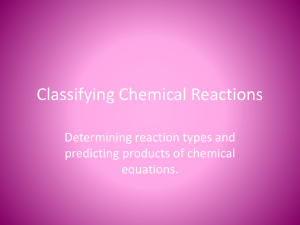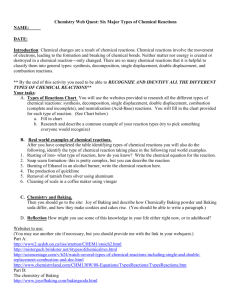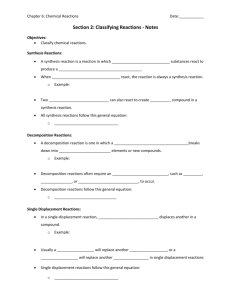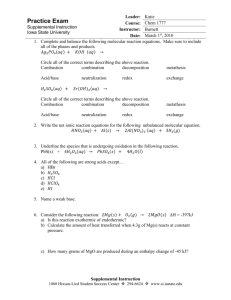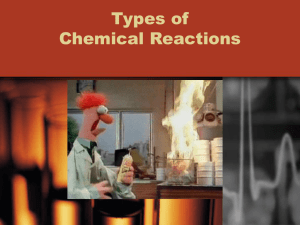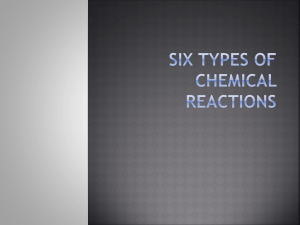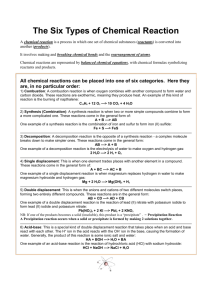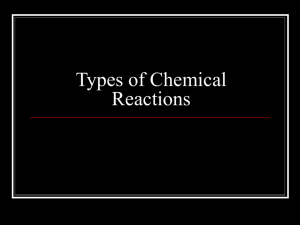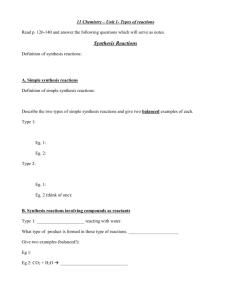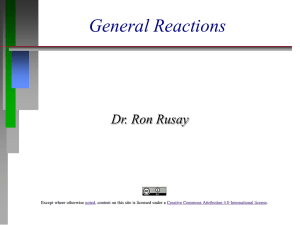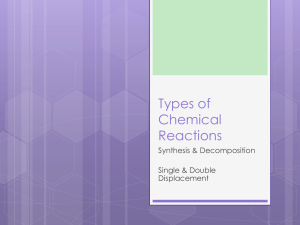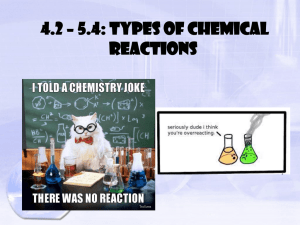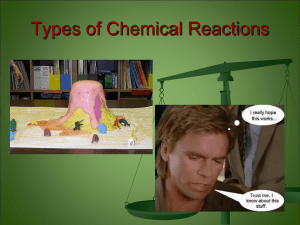Types of Reactions Summary - divaparekh
advertisement
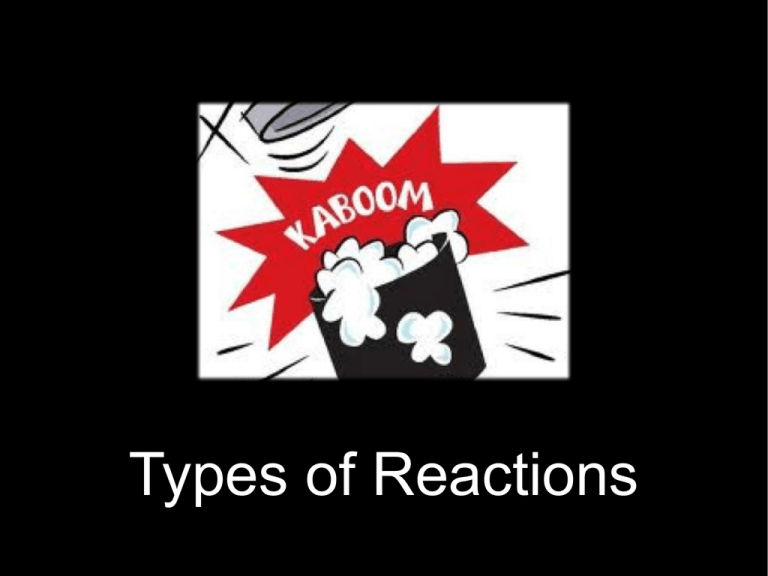
Types of Reactions A chemical reaction is a process that is usually characterized by a chemical change in which the starting materials (reactants) are different from the products. Chemical reactions tend to involve the motion of electrons, leading to the formation and breaking of chemical bonds. There are several different types of chemical reactions and more than one way of classifying. This presentation highlights some reaction types. Types of chemical reactions: • Synthesis • Decomposition • Displacement • Double Displacement • Redox • Combustion Direct Combination or Synthesis Reaction In a synthesis reaction two or more elements combine to form a compound. A + B → AB The combination of iron and sulfur to form iron (II) sulfide is an example of a synthesis reaction: 8 Fe + S8 → 8 FeS Chemical Decomposition Reaction In a decomposition reaction a compound is broken into smaller parts. AB → A + B The electrolysis of water into oxygen and hydrogen gas is an example of a decomposition reaction: 2 H2O → 2 H2 + O2 Single Displacement or Substitution Reaction A substitution or single displacement reaction is characterized by one element being displaced from a compound by another element. A + BC → AC + B An example of a substitution reaction occurs when zinc combines with hydrochloric acid. The zinc replaces the hydrogen: Zn + 2 HCl → ZnCl2 + H2 Metathesis or Double Displacement Reaction In a double displacement or metathesis reaction two compounds exchange bonds or ions in order to form different compounds. AB + CD → AD + CB An example of a double displacement reaction occurs between sodium chloride and silver nitrate to form sodium nitrate and silver chloride. NaCl(aq) + AgNO3(aq) → NaNO3(aq) + AgCl(s) Oxidation-Reduction or Redox Reaction In a redox reaction the oxidation numbers of atoms are changed. Redox reactions may involve the transfer of electrons between chemical species. Combustion A combustion reaction is a type of redox reaction in which a combustible material combines with an oxidizer to form oxidized products and generate heat (exothermic reaction). Usually in a combustion reaction oxygen combines with another compound to form carbon dioxide and water. An example of a combustion reaction is the burning of naphthalene: C10H8 + 12 O2 → 10 CO2 + 4 H2O Factors that affect reaction rate: • Temperature • Concentration • Medium • Presence of catalysts
